 NEWS: Catastrophic floods prompt proactive look at disasters
NEWS: Catastrophic floods prompt proactive look at disasters
BRIEFS: Lawmakers poised to align state tax code in October
CALENDAR: Education reform meeting, PSC hearing on tap
COMMENTARY, Brack: 17 policy questions for South Carolina candidates
SPOTLIGHT: Riley Institute at Furman University
MY TURN, Moore: Solar Coaster” puts thousands of jobs at risk
PHOTO ESSAY: The impact of Hurricane Florence
FEEDBACK: Take down the flag during storms
MYSTERY PHOTO: A different kind of 21 Club
S.C. ENCYCLOPEDIA: Indigo
NEWS: Catastrophic floods prompt proactive look at disasters
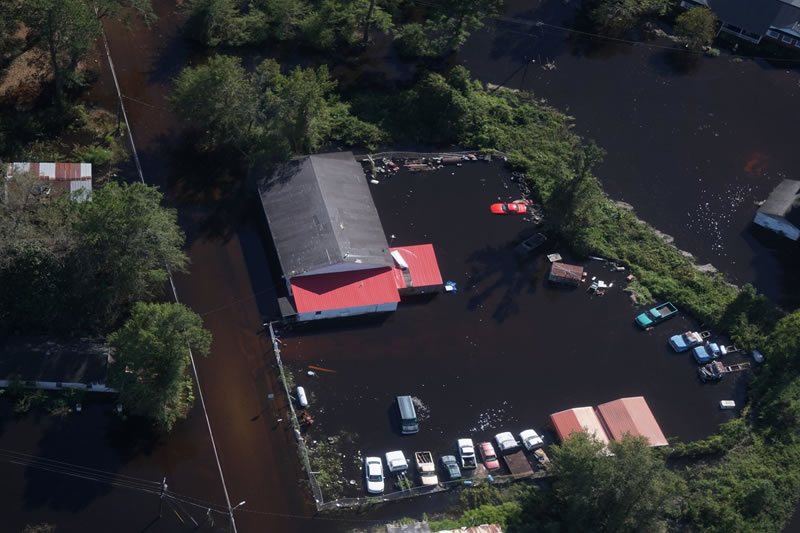
By Lindsay Street, Statehouse correspondent | A Charleston lawmaker has teamed with environmental groups to draft two pieces of legislation to help South Carolina become more proactive on flooding.
The bills would help move people from low-lying areas and steer future development toward higher ground.

“As we keep stalling, the water tables are rising,” Democratic S.C. Rep. Wendell Gilliard said this week. “We’ve got to move quick; we’ve got to be precise. We’ve got enough data and statistics to know the old ways aren’t working.”
As the Waccamaw River is expected to threaten thousands of homes in a record-breaking surge this weekend, lawmakers from Florence-ravaged parts of South Carolina and disaster-response experts are signaling a change of mindset, from reactive to proactive, when it comes to pricey and more frequent disasters.
“This is happening more often than ever before. Whoever thought we would be back here two years later addressing another catastrophic storm?” S.C. Sen. Kent Williams told Statehouse Report. The Marion Democrat also works for Marion County, hard-hit this year by Florence and in 2016 by Hurricane Matthew.
A disaster that’s still unfolding
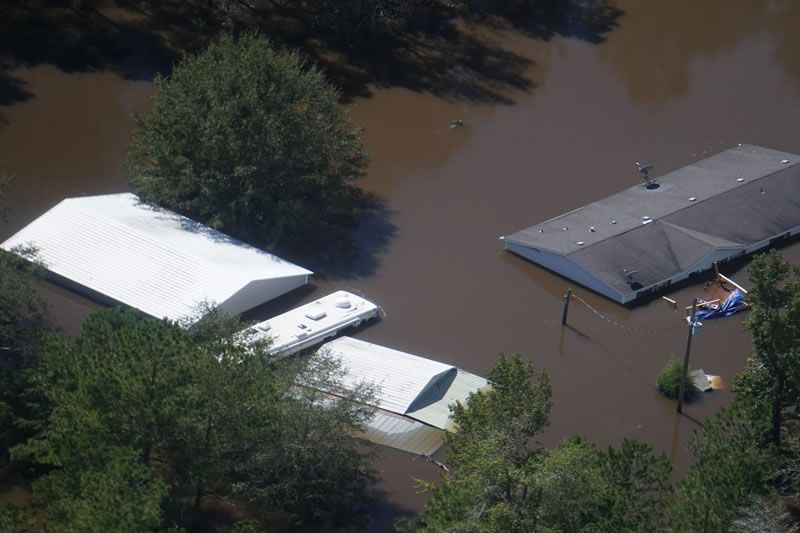
The total number of dead, how much the state will spend in helping residents and how local governments recover are still unfolding as trillions of gallons of water dumped during Hurricane Florence drains, in part, through South Carolina’s rivers. Gov. Henry McMaster is asking the federal government to pick up a $1 billion tab for the disaster.
“The damage in the northeastern part of our state will be catastrophic, surpassing anything recorded in modern history,” McMaster wrote in a Thursday letter to the state’s congressional delegation.
The state will incur costs not covered by the federal government, however. It’s already estimated that the state will need to spend $300 million on repairing infrastructure alone after Florence. The state’s Office of Adjutant General estimated this week that another $300 million is needed for state and local disaster recovery.
Disasters are adding up
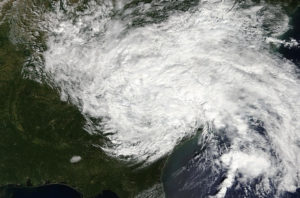
A look at recent flooding events shows disasters are adding up. The state spent nearly $100 million responding to the flood of 2015.
According to news reports months after Hurricane Matthew in 2016, the state expected the event to cost taxpayers $65 million.Williams said he spoke with powerful Florence Republican Sen. Hugh Leatherman and Republican McMaster about proactive options to help prevent another big flooding event. Leatherman’s office said it does not confirm conversations between senators or discuss details, and McMaster’s office did not respond to several requests seeking confirmation and what the governor would like to see done.
However, Williams’ delegation peer, GOP Sen. Stephen Goldfinch, said it is time to start looking at state policy and recurring flooding events.
“I enjoy the idea of local folks being able to own their own destiny but, if it affects at the state level, there’s no reason why we can’t look at that,” he said.
‘Outside the box’
Gilliard said he’s working with S.C. Coastal Conservation League and the Southern Environmental Law Center on drafting two bills that follows “outside the box” thinking. The bills were already in the works prior to Hurricane Florence’s erratic and scary path that led to mass evacuations and is currently tied to nine deaths in the state. At least five deaths have been blamed on rising waters.
The first bill is a transfer of development rights program, which would allow owners of low-lying property to sell their rights to developers, who then can get more leeway for development on higher ground. It can shift development away from low-lying areas that are vulnerable to flooding, while compensating property owners for the reduction in property values, according to the Coastal Conservation League’s Betsy La Force. It would likely be up to local governments on how they compensate landowners, she said.
The second bill in the works with Gilliard is a proposed Coastal Resiliency Revolving Fund, which would buy homes in floodplains and restore the land to open space.
Impact of making changes
Susan Cutter, the director of the Hazards and Vulnerability Research Institute at the University of South Carolina, said the lowest-lying areas of the state typically house the most impoverished people. Those people have trouble evacuating before the storm and trouble rebuilding after the storm, she said.
“The poorest always end up living in the most hazardous areas because it’s the areas they can generally afford,” she said.

Williams said he has seen that first-hand.
“They get hammered every time because of the area they are in … They don’t have the resources,” he said.
The fund could end the cycle of landowners having no way out but to try and rebuild, La Force said.
Williams and Goldfinch both said they were warm to a statewide development plan that would curb development in low-lying areas.
But that could face an uphill battle in a state that values home rule.
“There’s a whole lot of controversy about that,” Cutter said. But she said it comes down to who is responsible for bailing people out? The state.
“We need to seriously rethink about building and putting assets in hazardous areas in particular flood prone areas because all indications are that climate change is influencing the production of more frequent and intense rainfall events,” Cutter continued. “If we had a state land use policy that restricted development in hazard-prone areas that would go a long way to keep people from building where they shouldn’t build.”
But the idea of home rule is so powerful that the House was unable to pass a bill this session requiring landowners who had dams fail in the 2015 flood to shore up their property.
Broadening the focus
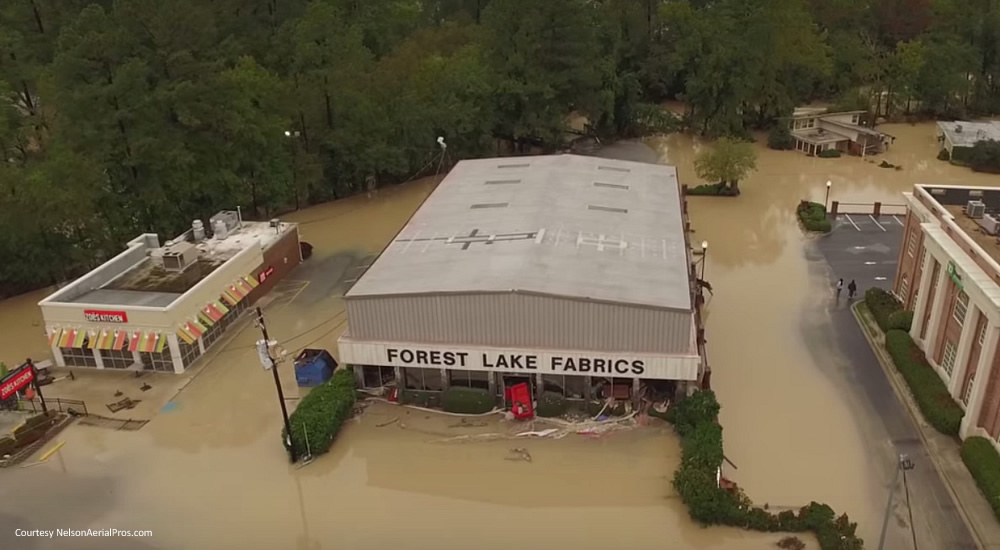
Additionally, Cutter said South Carolina needs to address its infrastructure — not just bridges but roads too — in areas that repeatedly flood.
“How many times can you close Interstate 95 during hurricane season? This is the main north-south route on the East Coast, and there’s an awful lot of commerce transport there,” she said. “It’s not just the bridges but the access to the bridges.”
Williams also has an eye on infrastructure improvements for the coming session.
“We have not done a very good job keeping up the pace with infrastructure. That’s one of things I’ll be working on,” he said. He said this may prove to be a heavy lift with a “hefty price tag.”

Goldfinch said a less-expensive proactive measure could come with inexpensive hydrology instruments that can more accurately measure and record rivers in the state. Some rivers have them, some rivers don’t, making forecasting difficult, Goldfinch said.
“(Then) we can notify people where the water is going,” he said. “There’s no reason why we can’t tell local leaders when its coming … and that’s not an expensive proposition.”
Another inexpensive proposition offered by Goldfinch is putting emergency orders in place before disaster strikes.
“I don’t see any reason why we can’t have them already prepared and issue them before a storm,” he said.
Cutter said she would like to see the governor keep evacuation orders in place until after flood events have ended. She said that would help save lives and keep people off unsafe roads and out of communities that could later flood.
- Have a comment? Send to: feedback@statehousereport.com
NEWS BRIEFS
BRIEFS: Lawmakers poised to align state tax code in October
By Lindsay Street, Statehouse correspondent | As the clock ticks down to tax season, lawmakers are expected to convene in early October to align the state’s tax code with the federal code.
![]() A Senate panel passed amendments Tuesday to a House bill on what’s called “conformity,” which would realign the state’s tax code in light of federal tax cuts made in December 2017 through overhauling the federal tax code.
A Senate panel passed amendments Tuesday to a House bill on what’s called “conformity,” which would realign the state’s tax code in light of federal tax cuts made in December 2017 through overhauling the federal tax code.
If the state simply agreed to update its code based on the federal changes, some state taxes automatically would have gone up. At the same time, conforming to the federal code would help to simplify filing for preparers and help keep compliance up.
But if the state does nothing — and doesn’t conform to the federal changes — filing taxes would be confusing, to say the least, because of a federal system and a state system that did not sync.
The middle ground — conforming in a way that state taxes wouldn’t go up — is the middle ground with which state lawmakers have been struggling.
The amended bill passed Tuesday calls for a $4,110 exemption for any dependent and doubles that amount for dependents under the age of 6. Other tweaks were made to help most S.C. taxpayers not incur any other increase.
Oconee Republican Sen. Thomas Alexander chaired the Finance Committee’s subcommittee on conformity.
“This is about helping the citizens in the state being able to file their returns in a timely manner,” Alexander said in Tuesday’s meeting.
The amended bill now must go to the Senate Finance Committee before going before the General Assembly. Tax experts in the state have urged lawmakers to pass conformity prior to January to avoid snags.
Other recent news of note:
Road deaths most common after Florence. Two in three deaths reported so far in the wake of Hurricane Florence have been tied to traffic accidents in inclement weather and people driving on flooded roads. Read the story here.
Columbia solicitor indicted. Richland Solicitor Dan Johnson is facing 26 federal charges of fraud linked to personal spending of taxpayer money. Johnson has denied the charges. Gov. Henry McMaster suspended Johnson from office this week following the grand jury indictments, and Attorney General Alan Wilson announced Thursday Johnson would also face additional state charges. Read the story here.
Hospitals eat lost revenue. The cost of moving hundreds of patients out of the way of Hurricane Florence will be shouldered by hospitals, and later passed on to future patients. Read more here.
S.C. among lowest for tax collected per capita. The Tax Foundation has listed South Carolina as 48th in the nation for the amount of tax it collects per capita. The state collects $3,425 per year for every man, woman and child. The lowest state was Alabama at $3,141 per capita, and the highest state was North Dakota at $9,182 per capita. Read more here.
- Have a comment? Send to: feedback@statehousereport.com
CALENDAR: Education reform meeting, PSC hearing on tap
Staff reports | The House Ways and Means Committee will convene its education reform subcommittee 11 a.m. Sept. 25 in room 521 of the Blatt building.
![]() The education reform panel will hear from Southern Regional Education Board’s State Services Vice President Lee Posey, and S.C. Revenue and Fiscal Affairs Executive Director Frank Rainwater. See the agenda here.
The education reform panel will hear from Southern Regional Education Board’s State Services Vice President Lee Posey, and S.C. Revenue and Fiscal Affairs Executive Director Frank Rainwater. See the agenda here.
Also coming up next week, the State Regulation of Public Utilities Review Committee will hold a public hearing on Public Service Commission applicants for Seat 2 at 10 a.m. Sept. 24 in room 207 of the Gressette building.
Applicants include: James “Buddy” Atkins of Columbia, Florence P. Belser of Columbia, Patricia P. Carson of North, Bruce K. Cole of Columbia, Elliott F. Elam Jr. of Lexington, and Brenton D. Jeffcoat of Lexington. Elam is the incumbent. See the agenda here.
Click below for other items coming up in the Statehouse:
BRACK: 17 policy questions for South Carolina candidates
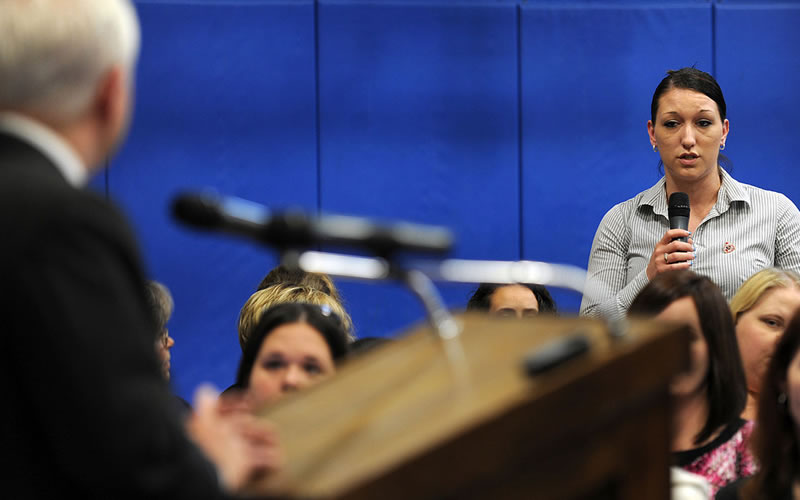
Commentary by Andy Brack, editor and publisher | This is the time of the political season that an odd dance begins.
 Politicians want to present a compelling image so you’ll cast a vote for them. But they often don’t want to give away too much of what they really think in case it gets them in trouble. So they may hedge, waffle or give so much bureaucratic mumbo-jumbo that the questioner falls asleep.
Politicians want to present a compelling image so you’ll cast a vote for them. But they often don’t want to give away too much of what they really think in case it gets them in trouble. So they may hedge, waffle or give so much bureaucratic mumbo-jumbo that the questioner falls asleep.
Meanwhile, voters want to know specifically where candidates stand on everything from aardvarks to zucchini without all of the bluster, bombast and bull.
So it’ a good time to offer some questions readers can pose to state House and statewide candidates to get to the meat of where they stand. Use at your own peril (now that they know they may be getting them).
![]() With so much about state government focusing on budgets and money, consider:
With so much about state government focusing on budgets and money, consider:
- If you have $100 million in state money to invest in one recurring line item in South Carolina’s state budget, what would you spend it on. [NOTE: This is not a question about tax cuts; You have to spend the money on something real, not spend it on lowering taxes.]
- South Carolina has a ridiculous number of sales tax exemptions. Studies show removing these special-interest exemptions would pump a large amount of money into the state budget. Pick five exemptions that we should get rid of and explain why.
- What specific professional experience do you offer to the office that makes you a good steward of our tax dollars?
- South Carolina hasn’t borrowed money through a bond bill for almost 20 years to make strategic investments. So, the state now has the capacity to borrow at low rates to pay for big projects. Do you support or reject use of borrowing through a bond bill of at least $500 million to pay for big projects, such as paying for long-ignored maintenance needs at colleges?
- Out-of-state Internet retail companies now have to pay sales tax in South Carolina, due to a recent U.S. Supreme Court decision. That will mean an extra $100 million to state tax coffers. How would you spend this revenue (and again, not “spend” it on a tax cut)?
![]() In South Carolina, education spending makes up more than half of state budget, leading to these questions:
In South Carolina, education spending makes up more than half of state budget, leading to these questions:
- State lottery dollars are mostly for higher education. Yes or no – should a significant share of lottery dollars be used for public K-12 education, or should the system stay the same? Why?
- If you had to choose to raise the salaries of K-12 teachers or lower the cost of college, which would you choose and why?
- South Carolina continues to lag the rest of the nation in education. What specifically do you support to help improve education in big ways, not baby steps? Don’t answer with political platitudes.
- The state of South Carolina regularly overrides the state education funding formula in the law, which allows it to underinvest in public K-12 education by hundreds of millions of dollars. Are you for or against following the K-12 funding formula in state law or do you support breaking that law and continuing to underinvest?
- What is the single biggest reason that South Carolina’s education system is ranked at the bottom?
![]() Finally, there’s a grab-bag of various questions you may want to get people on the record?
Finally, there’s a grab-bag of various questions you may want to get people on the record?
- Do you support President Trump? Why or why not?
- Do you believe all journalists are liars? Explain the role of the press in governance.
- Are you satisfied in the investments being made to improve South Carolina’s roads. If so, why? If not, why not?
- What will you do to protect South Carolina’s water supply from nuclear plant leaks?
- Do you support increasing state funds to the Conservation Bank to protect special places? Why or why not? If so, how much would you support in increased funding?
- Specifically, how would you increase access to affordable health care to all South Carolinians?
- If you have served in any public office, what one vote did you make that you now regret? Why did you vote that way?
We’re sure there are a lot more of good, hard-hitting questions. What would you ask?
- Have a comment? Send to: feedback@statehousereport.com.
SPOTLIGHT: Riley Institute at Furman University
 The public spiritedness of our underwriters allows us to bring Statehouse Report to you at no cost. This week’s spotlighted underwriter is The Richard W. Riley Institute of Government, Politics, and Public Leadership, a multi-faceted, non-partisan institute affiliated with the Department of Political Science at Furman University. Named for former Governor of South Carolina and United States Secretary of Education, Richard Riley, the Institute is unique in the United States in the emphasis it places on engaging students in the various arenas of politics, public policy, and public leadership.
The public spiritedness of our underwriters allows us to bring Statehouse Report to you at no cost. This week’s spotlighted underwriter is The Richard W. Riley Institute of Government, Politics, and Public Leadership, a multi-faceted, non-partisan institute affiliated with the Department of Political Science at Furman University. Named for former Governor of South Carolina and United States Secretary of Education, Richard Riley, the Institute is unique in the United States in the emphasis it places on engaging students in the various arenas of politics, public policy, and public leadership.
- Learn more about the Riley Institute.
- Also learn more about the Riley Institute’s Center for Education Policy and Leadership.
MY TURN, Moore: “Solar Coaster” puts thousands of jobs at risk
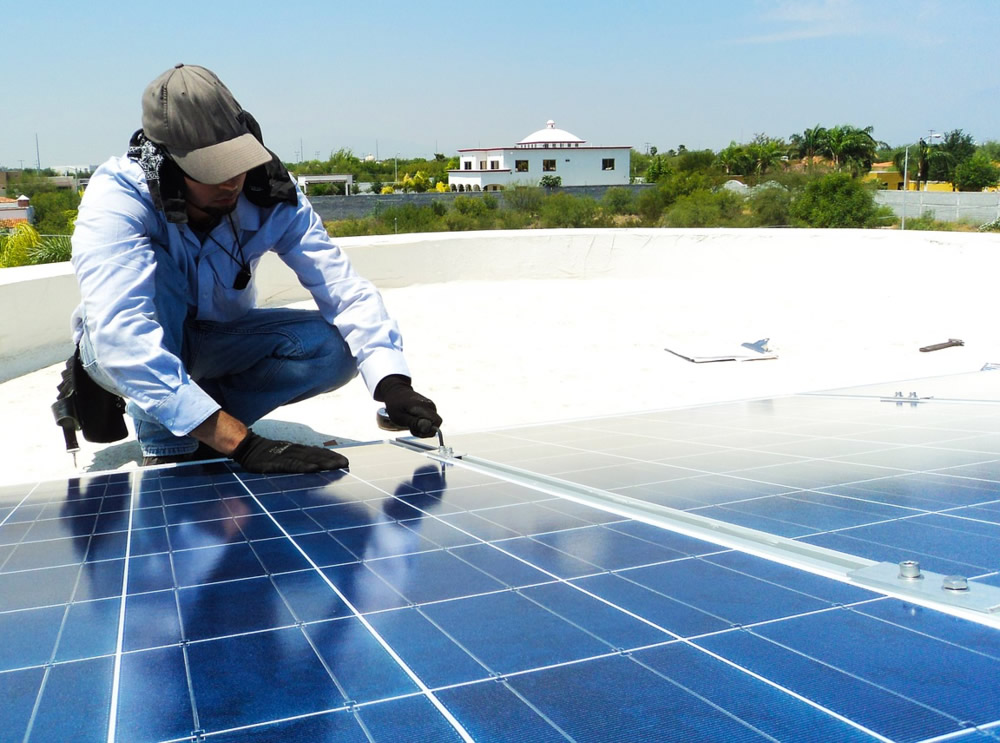
By Eddy Moore, special to Statehouse Report | Workers in the solar industry joke that when changes in regulation cause boom-bust cycles, it is like riding a “solar coaster.” The boom: In 2017, South Carolina produced 20 times as much solar electricity as it did in 2014, growing a nascent industry to 3,000 jobs.

And the threatened bust: Current law allows the rules for customer compensation to change when the amount of renewable power those customers can produce from rooftop solar adds up to 2 percent of the utility’s highest demand. In the Upstate, we have already hit that threshold. In other parts of the state, we are expected to hit it next year.
Welcome to the solar coaster! Three thousand solar workers are nervously watching legislators and regulators — in whose hands rest the future of their jobs — to see what rule changes will occur as customers hit the 2 percent mark and whether the industry remains viable.
We are at a crossroads for how much solar energy can expand in South Carolina.
And there is a ray of sunshine. The S.C. Coastal Conservation League, Southern Environmental Law Center, and partners from the solar industry and conservation community recently reached an agreement with Duke Energy Carolinas to extend current rules for its Upstate customers who want to go solar. Under those rules, solar customers essentially swap the energy they produce with the electric company, getting a one-to-one credit for each unit of energy they produce at home.
Without the agreement, which is an extension of the current regulations that will last until March 15, 2019, new solar customers would have been required to sell all the power they produce from their rooftops to Duke Energy at a lower rate and then buy it back at a higher rate. That unfavorable shift in compensation was threatening to drive solar companies out of the Upstate until the agreement was reached.
On Sept. 19, state regulators at the Public Service Commission approved the temporary fix. That gives Duke, solar companies and environmental groups a short span of time to develop a longer-term solution for legislative action early next year.
At stake is the right of South Carolinians to have a reasonable opportunity to generate and use their own renewable energy. The agreement with Duke is a hopeful sign that South Carolina can continue with the collaborative spirit that led to the enactment four years ago of legislation that jumpstarted the solar industry in this state.
We appreciate the South Carolina Office of Regulatory Staff, Duke Energy Carolinas and all our conservation and solar industry partners for coming to the table — proof that good things can happen when we work together. But let’s make some permanent fixes to the solar coaster so it’s a little less of a wild amusement park ride and a more serious part of our economy that deserves a stable regulatory climate.
Eddy Moore is director of the Energy and Climate Program at the S.C. Coastal Conservation League in Charleston.
- Have a comment? Send it to: feedback@statehousereport.com.
A look at the impact of Hurricane Florence
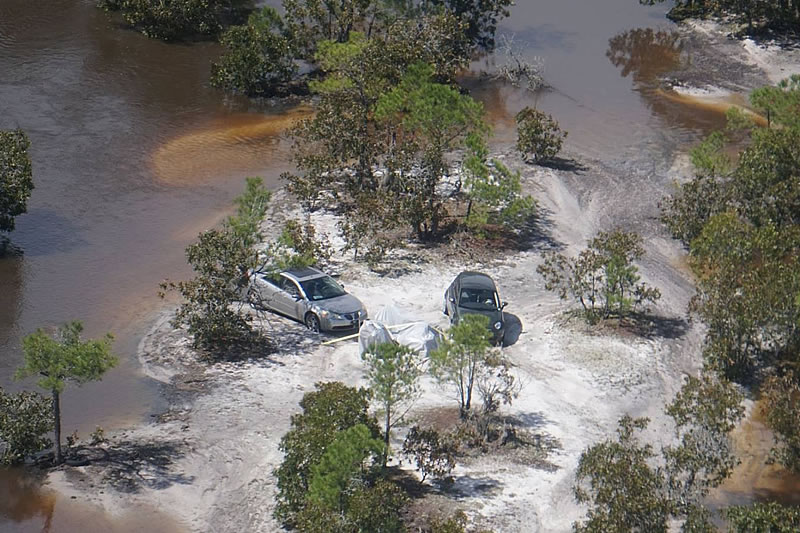
Staff reports | Electrical power started popping off early Saturday as Hurricane Florence lingered, dumping rain throughout eastern North Carolina, the Grand Strand, the Pee Dee and the Midlands. More than a million reportedly lost power in North Carolina. In South Carolina, tens of thousands lost power in the days that followed thanks to swollen rivers and other damage.
Below are photos from the S.C. Emergency Management Division, Santee Cooper and S.C. Electric & Gas that show the extent of the storm and efforts to begin cleanup and restore power.
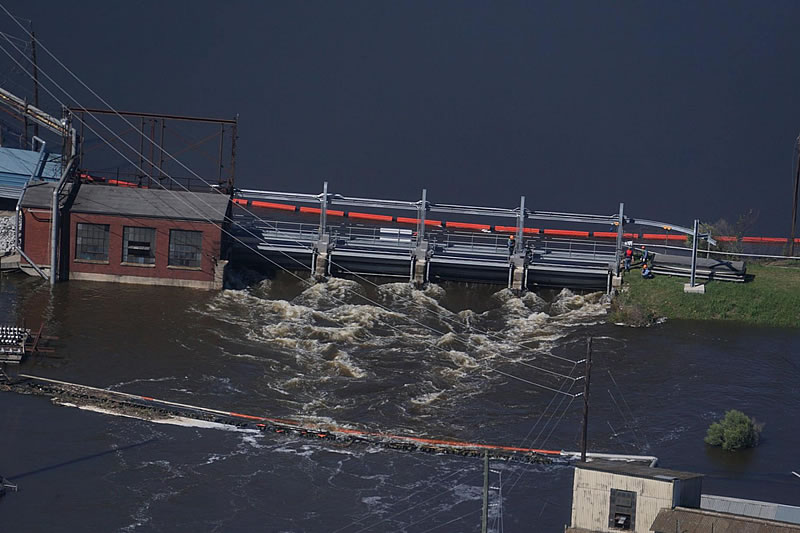
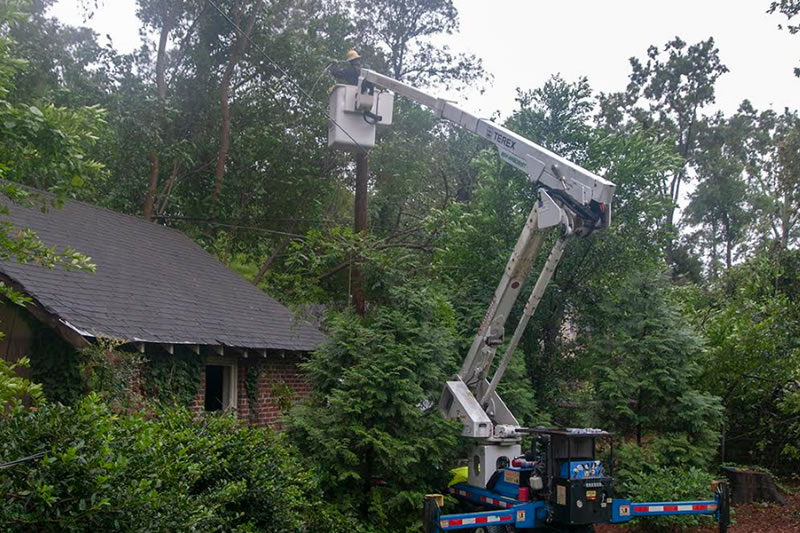
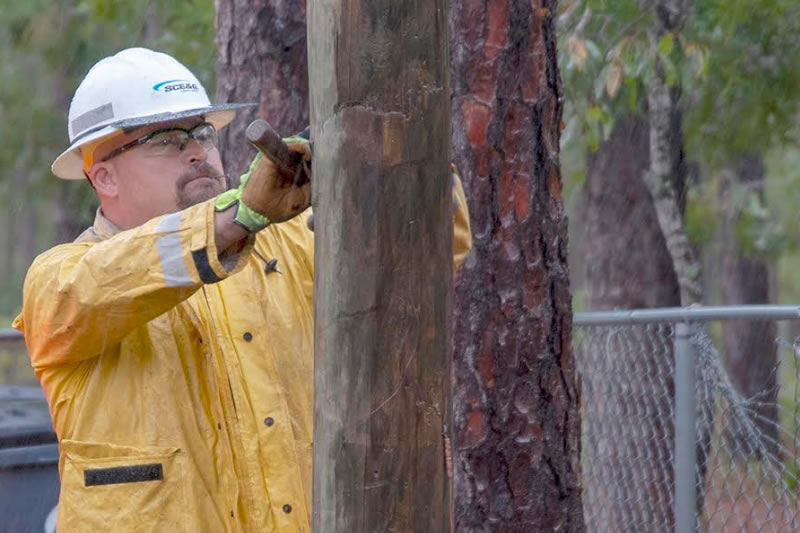
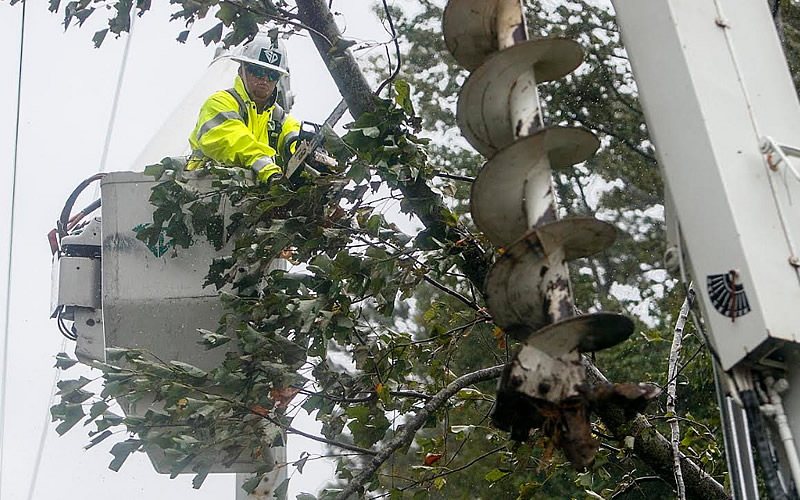
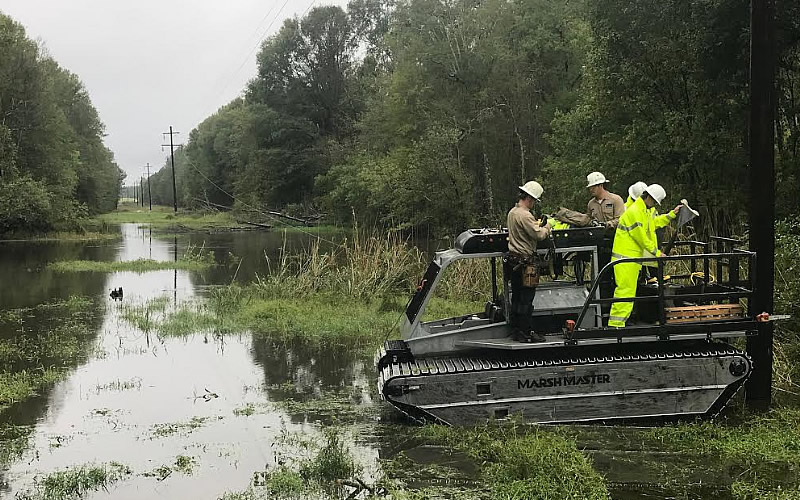
FEEDBACK
FEEDBACK: Take down the flag during storms
To the editor:
![]() People complain about the NFL players kneeling during the National Anthem, saying it’s disrespectful to the flag and those who serve ( I TOTALLY AGREE!). However everyone knew Florence was coming for weeks as did I. And the FIRST thing I did to prepare my yard for the storm was take down my American flag and store it!
People complain about the NFL players kneeling during the National Anthem, saying it’s disrespectful to the flag and those who serve ( I TOTALLY AGREE!). However everyone knew Florence was coming for weeks as did I. And the FIRST thing I did to prepare my yard for the storm was take down my American flag and store it!
I can’t believe the agencies that are flying the flag…including MY state House! Gggggrrr!
I hope ours does not look like the one on the news from North Carolina shredded to pieces on national TV!!! Very disappointed!
— Deborah Kitterman, Sumter, S.C.
Send us your thoughts. We love hearing from our readers and encourage you to share your opinions. But you’ve got to provide us with contact information so we can verify your letters. Letters to the editor are published weekly. We reserve the right to edit for length and clarity. Comments are limited to 250 words or less. Please include your name and contact information.
- Send your letters or comments to: feedback@statehousereport.com
MYSTERY PHOTO: A different kind of 21 Club
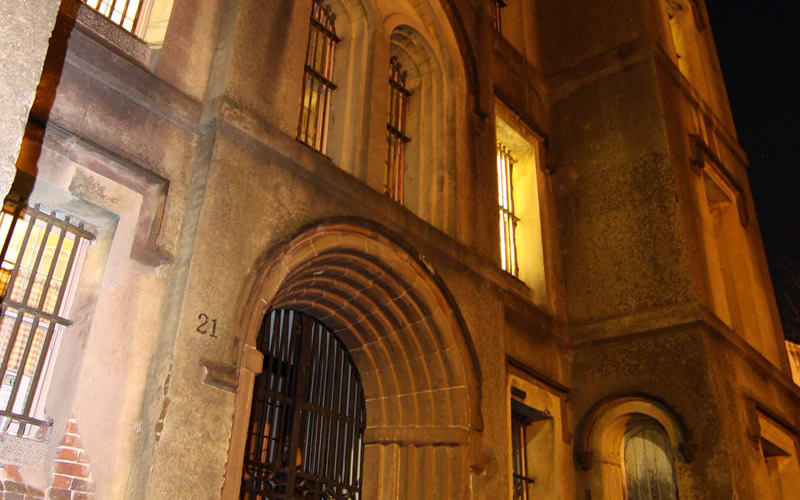
The only hint you’ll get is the number 21 in this photo, but we can assure you it’s not the famous 21 Club and former speakeasy on West 52nd Street in New York City. But what and where is it? Send your guess to: feedback@statehousereport.com. And don’t forget to include your name and the town in which you live.
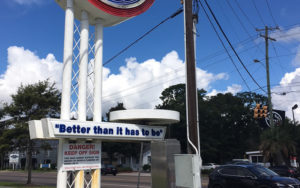
Our previous Mystery Photo
Our Sept. 14 mystery garnered an impressive array of 14 photo sleuths, all of whom knew what was missing in the picture: the Coburg cow in West Ashley in Charleston. The cow evacuated, as did tens of thousands of people before Hurricane Florence’s winds blew in. The general rule of thumb is when the cow comes down, you should leave.
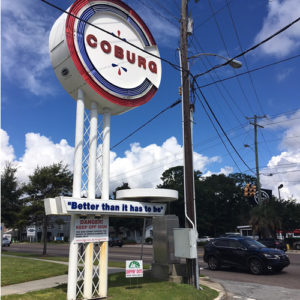 Hats off to this week’s sleuths, including some first-timers: Philip Cromer of Beaufort; Steve Willis of Lancaster; David Lupo of Mount Pleasant; Curt Rone of West Columbia; Tray Hunter of Bluffton; George Graf of Palmyra, Va.; Irving Rosenfeld of James Island; Patti Anderson of Edgefield; Faith Line of Anderson; Will Williams of Aiken; Bill Segars and Don Clark, both of Hartsville; Wayne Beam of North Myrtle Beach; and Jay Altman of Columbia.
Hats off to this week’s sleuths, including some first-timers: Philip Cromer of Beaufort; Steve Willis of Lancaster; David Lupo of Mount Pleasant; Curt Rone of West Columbia; Tray Hunter of Bluffton; George Graf of Palmyra, Va.; Irving Rosenfeld of James Island; Patti Anderson of Edgefield; Faith Line of Anderson; Will Williams of Aiken; Bill Segars and Don Clark, both of Hartsville; Wayne Beam of North Myrtle Beach; and Jay Altman of Columbia.
Willis surely grinned when he added this comment: “Of course the Coburg cow is missing. Despite the sign, the cow has been ridden by countless Citadel cadets.”
Hunter remembered an ache when he added, “Side note: As a Citadel grad, it is not a comfortable ride.”
Send us a mystery: If you have a photo that you believe will stump readers, send it along (but make sure to tell us what it is because it may stump us too!) Send to: feedback@statehousereport.com and mark it as a photo submission. Thanks.
S.C. ENCYCLOPEDIA
Indigo

S.C. Encyclopedia | Indigo, a plant that produces a blue dye, was an important part of South Carolina’s eighteenth-century economy. It was grown commercially from 1747 to 1800 and was second only to rice in export value. Carolina indigo was the fifth most valuable commodity exported by Britain’s mainland colonies and was England’s primary source of blue dye in the late-colonial era.
South Carolina experimented with indigo production as early as the 1670s but could not compete with superior dyes produced in the West Indies. Cultivating and processing the plant was complex, and planters found other commodities more reliable and easier to produce. Indigo was reintroduced in the 1740s during King George’s War (1739–1748), which disrupted the established rice trade by inflating insurance and shipping charges and also cut off Britain’s supply of indigo from the French West Indies. In South Carolina, Eliza Lucas Pinckney and Andrew Deveaux experimented with cultivation in the 1730s and 1740s. Pinckney’s husband, Charles, printed articles in the Charleston Gazette promoting indigo. In London colonial agent James Crokatt persuaded Parliament in 1749 to subsidize Carolina indigo production by placing a bounty of six pence per pound on the dye.
In addition to economic motives, indigo production also succeeded because it fit within the existing agricultural economy. The crop could be grown on land not suited for rice and tended by slaves, so planters and farmers already committed to plantation agriculture did not have to reconfigure their land and labor. In 1747, 138,300 pounds of dye, worth £16,803 sterling, were exported to England. The amount and value of indigo exports increased in subsequent years, peaking in 1775 with a total of 1,122,200 pounds, valued at £242,395 sterling. England received almost all Carolina indigo exports, although by the 1760s a small percentage was being shipped to northern colonies.
Two varieties of indigo were native to Carolina, Indigofera Carolinians and Indigofera Lespotsepala, but neither produced a reputable dye. Planters preferred either Indigofera Tinctoria or “Guatemala” indigo, a hearty variety that grew well in a range of soil types, or Indigofera Anil or “French” indigo, a more delicate variety best suited for rich black soil. Prices paid for the dye varied with quality. In general dye from French or Spanish colonies sold for more than Carolina indigo, whose reputation for quality was less favorable.
The cycle of planting, processing, and marketing indigo began in March, when the fields were prepared for sowing. Planting began in early April, with a first harvest in July and often a second harvest in August or September. After cutting, the plant was carried to the processing site, a work area generally shaded by a thatched roof. Specialized equipment included three graduated vats set next to each other, in which the plants would be converted to dye. The conversion involved soaking the plants in the first vat, beating the indigo-soaked water in the second vat until thickened grains formed, then draining away that water into the third vat. The thickened mud that settled to the bottom of the second vat was the indigo paste, which was dried, cut into squares, packed in barrels, and shipped to market during the winter months. Slaves were responsible for most of South Carolina’s indigo production. Field slaves planted, weeded, and harvested the crop, and skilled “indigo slaves” worked to convert the plant to dye. Slaves who understood the art of processing the dye had greater value, as an entire year’s product depended on the talents of the indigo maker.
Carolina indigo was grown in a variety of locations and in a number of ways. In the parishes south of Charleston, most indigo planters grew the weed in combination with rice, as a “second staple.” Planters growing indigo closer to the city were split, with roughly half growing rice and indigo and half growing only indigo. North of Charleston, most planters focused solely on indigo. By the 1760s production expanded from the Lowcountry to the interior. Indigo was especially important in Williamsburg Township, where the soil was ideal and the crop was an important part of the local economy. By the 1770s, some indigo was also produced in Orangeburg and Fredericksburg Townships.
The Revolutionary War disrupted production, although the Continental army used Carolina indigo to dye some of its uniforms. Production appeared to recover after the war, as 907,258 pounds of dye were exported in 1787. But indigo exports declined sharply in the 1790s. No longer part of the British Empire, South Carolina indigo growers lost their bounty and market as England turned to India to supply its indigo demand. Carolina planters soon after turned their attention to cotton, another crop that fit neatly into the plantation economy. Indigo was produced and used locally throughout the nineteenth century, but by 1802 it was no longer listed among Carolina’s exports.
— Excerpted from an entry by Virginia Jelatus. This entry hasn’t been updated since 2006. To read more about this or 2,000 other entries about South Carolina, check out The South Carolina Encyclopedia, published in 2006 by USC Press. (Information used by permission.)
ABOUT STATEHOUSE REPORT
Statehouse Report, founded in 2001 as a weekly legislative forecast that informs readers about what is going to happen in South Carolina politics and policy, is provided to you at no charge every Friday.
- Editor and publisher: Andy Brack, 843.670.3996
- Statehouse correspondent: Lindsay Street
More
- Mailing address: Send inquiries by mail to: P.O. Box 22261, Charleston, SC 29407
- Subscriptions are free:Click to subscribe.
- We hope you’ll keep receiving the great news and information from Statehouse Report, but if you need to unsubscribe, go to the bottom of the weekly email issue and follow the instructions.
- © 2018, Statehouse Report. All rights reserved.


